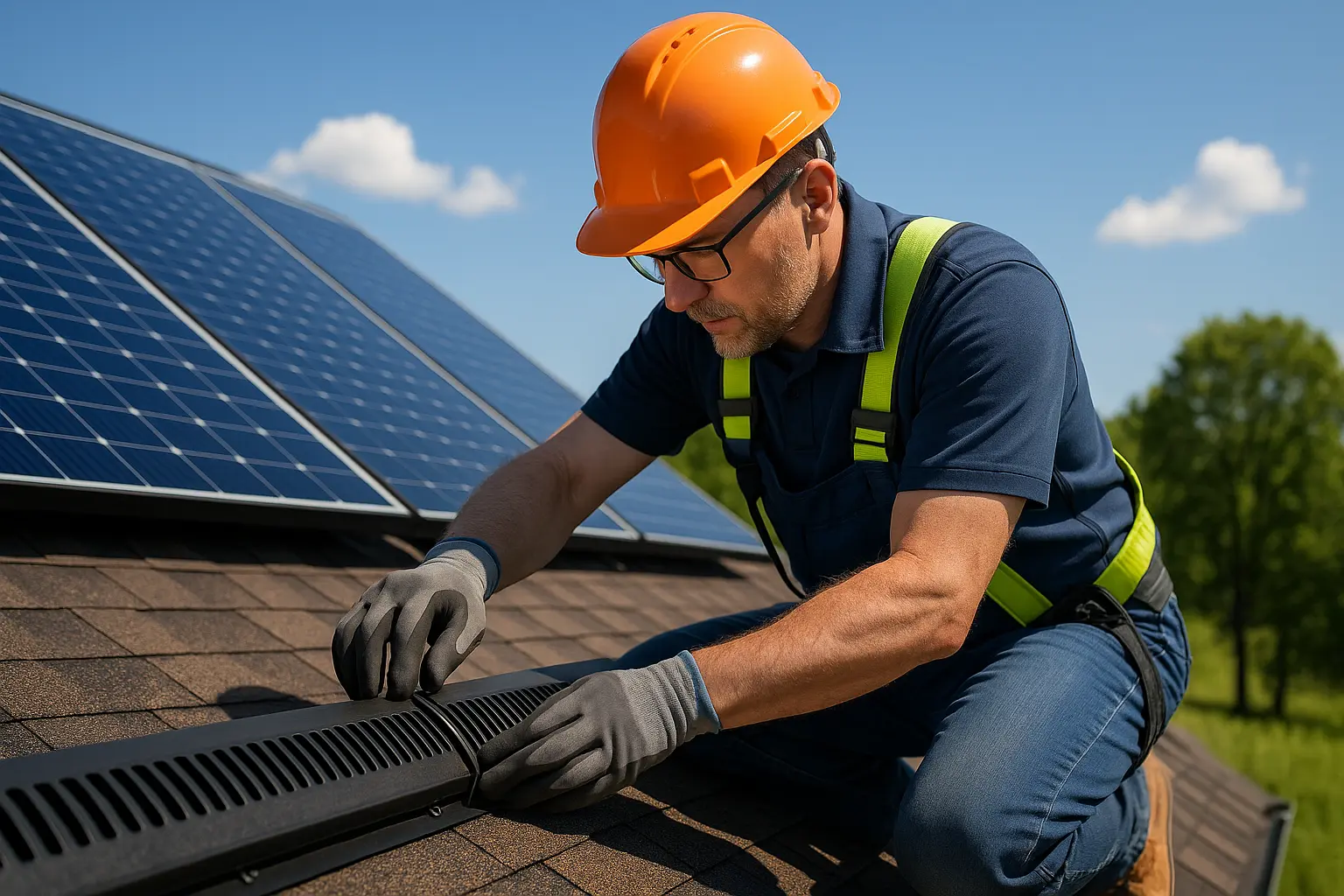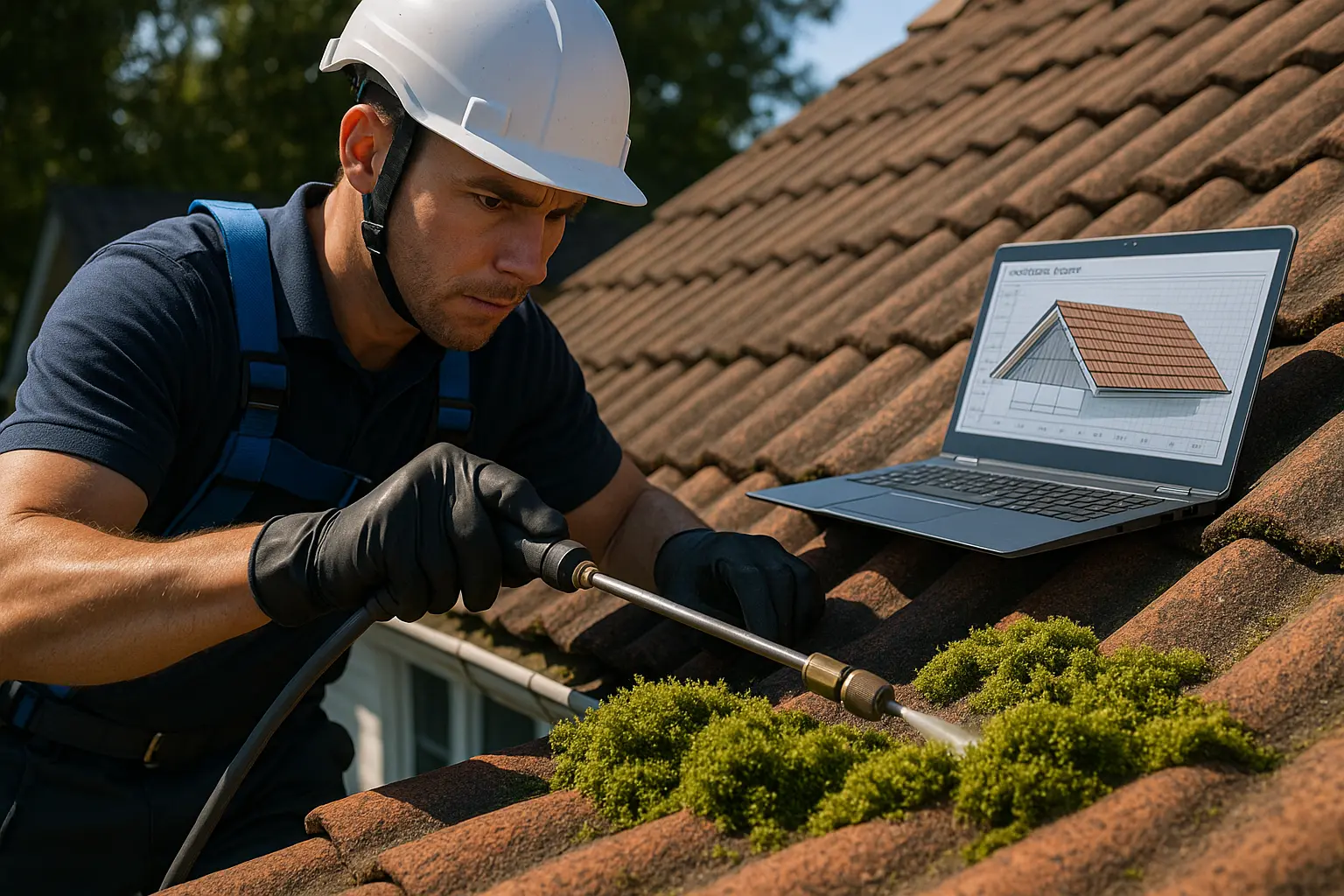Introduction
Choosing the perfect roof ventilation system is essential for creating a comfortable and energy-savvy home. With so many options available—from ridge vents and soffit vents to attic fans—it’s easy to feel overwhelmed. However, understanding the benefits and differences between these choices can help you design an attic air circulation plan that meets your home’s specific needs. In an era of rising energy expenses and environmental awareness, getting the ventilation right not only extends the life of your roof but also keeps the attic cooler, controls moisture, and helps lower your energy bills. This guide offers clear insights and technical details so you can make smart decisions about your home’s roof ventilation system while enjoying improved indoor air quality and energy savings.
Optimal Roof Ventilation Strategies
When you invest in optimal roof ventilation, you’re committing to a healthier roof structure and a more efficient home environment. In this article, we explore everything from common ventilation types to key features and installation tips. Adopting an optimal roof ventilation approach means selecting a system that encourages natural airflow and ensures your attic benefits from consistent, even temperature control. By balancing modern technology with classic design elements, homeowners can enjoy a system that pairs durability with energy efficiency.
Many experts agree that the term roof ventilation system sums up various methods to manage attic air flow, moisture, and temperature. Whether you choose a passive or mechanically assisted design, the impact on your indoor comfort and overall energy consumption is considerable. Effective ventilation is the unsung hero behind a roof that lasts and an attic that remains cool even on the hottest days.
Optimal Roof Ventilation Benefits Explained
An effective and well-balanced roof ventilation system is a game changer in protecting your home. A system that provides optimal roof ventilation takes away excess moisture, reduces the risk of mold and decay, and keeps structural issues at bay. As warm air naturally rises, using modalities such as ridge vents and soffit vents is a smart way to let heated air escape. In summer, this lowers the interior temperature, meaning your cooling systems work less strenuously—a feature that can lead to notable savings on your power bills.
Any home benefiting from optimal roof ventilation also gains improved attic air circulation. In the colder months, carefully managed airflow helps avoid ice dams and buildup of condensation on insulation. The careful placement of vents helps in channeling out the accumulated moisture and promotes an even temperature spread, thereby preserving essential timber and other materials from water damage over time. In essence, proper ventilation is a cornerstone of sustainable home maintenance coupled with energy efficiency.
Integrating technologies such as solar-powered attic fans further enhances the overall performance. These automated fans boost the design of an optimal roof ventilation setup by actively drawing warm air out, reducing reliance on electric-powered systems, and making the entire ventilation process more environmentally friendly.
Understanding Roof Ventilation Systems
Why Attic Airflow Is Crucial
The importance of good attic ventilation goes beyond simple temperature control—it’s about protecting your investment. Without proper airflow, moisture can accumulate and set the stage for mold, wood rot, and even structural harm. A balanced system not only defends against these issues but also aids in keeping indoor air pollution at bay by preventing fungal spores from forming. The inclusion of a roof ventilation system in your home ensures that warm air escapes and cooler air flows seamlessly into the attic.
This natural exchange of air means that during hot days, your living spaces remain cooler while your air conditioner isn’t overworked. In winter, strategic ventilation mitigates the risk of ice dams caused by uneven roof temperatures. Homeowners who have adopted an optimal roof ventilation setup report significant improvements in overall energy performance. Regular maintenance and using the right vent types can result in a longer-lasting roof and a healthier home.
Different Ventilation Options
There are several ways to ensure effective attic air circulation. The most popular ventilation options include:
- Ridge vents – Installed near the peak of the roof, these vents allow warm air to escape naturally. Their hidden design makes them a favored choice for many, as they blend effortlessly with the roof’s profile while offering excellent airflow.
- Soffit vents – Placed under the eaves of the roof, soffit vents pull cool air in from the outside, complementing the outgoing warm air from the ridge vents. They work hand in hand with other ventilation components to create a balanced attic environment.
- Gable vents – Often found on the sides of the roof or the gable ends, they provide an additional escape route for hot or moist air, especially in traditional home designs.
- Static vents – These fixed vents depend solely on air convection and are installed at strategic points around the roof to ensure steady airflow even when other vent types cannot be accommodated.
- Powered attic fans – Mechanized fans, sometimes solar-driven, actively remove hot air from the attic. They are particularly helpful in regions with dense heat or humidity.
Each option has its own set of advantages, and the best choice depends on your home’s layout and design. For properties with steep roofs, ridge vents prove extremely effective, whereas flatter or more intricate roof designs might benefit from a mix of static vents and powered attic fans. The ultimate goal is to achieve optimal roof ventilation that supports a healthy attic climate and enhances energy savings.
Key Features and Considerations
When evaluating potential systems, the features you look for are key to long-term success. First and foremost, system size is determined by the total roof area. A small ventilation solution typically isn’t enough for a larger roof, which might develop hotspots and moisture pockets if not adequately managed.
Energy efficiency also plays a role. Modern systems are built to reduce energy consumption by lessening the burden on air conditioning and heating systems. Consider how features like solar-powered attic fans can boost your overall energy performance while cutting down on power costs. It is also wise to assess the durability of materials used in the vents. For instance, metal options like aluminum or stainless steel are more resistant to harsh weather than their plastic counterparts.
Aesthetics should not be overlooked. Beach homes or sleek modern residences naturally aim for hidden or streamlined solutions that mesh perfectly with overall appearance. By integrating a roof ventilation system that is both efficient and visually appealing, homeowners can create an environment of optimal roof ventilation without compromising on style.
Assessing Your Home’s Needs
Climate and Weather Challenges
Local weather conditions heavily influence the design of your attic ventilation plan. If you live in a warm and muggy area, the focus should be on drawing out hot air and reducing attic temperatures. A setup combining ridge vents, soffit vents, and a reliable attic fan can effectively cool down an overheated space and lessen reliance on your AC system. In these cases, ensuring optimal roof ventilation is key to maintaining a peaceful interior temperature and lowering energy costs.
In contrast, colder regions bring a different set of challenges. In these areas, the priority becomes preventing moisture accumulation that could lead to ice dam formation and potential water damage. Here, even temperature distribution across the roof is essential to avoid areas where warm air might cause unwanted melting and refreezing. A roof ventilation system that promotes consistent airflow acts as a preventive measure against these issues.
For example, several homeowners in the Pacific Northwest have found that combining ridge vents and soffit vents improves not only the overall airflow but also the efficiency of their heating systems. This approach to optimal roof ventilation helps manage high humidity levels and frequent rain, keeping moisture under control to safeguard the roof structure.
Roof Design and Airflow Dynamics
The shape and structure of your roof are important when choosing the right ventilation strategy. Roof pitch, design complexity, and even the attic’s internal layout can dictate the best method for ensuring proper ventilation. Homes with steeply pitched roofs naturally promote the rise of hot air, making them ideal candidates for ridge vents placed at the apex of the roof. Meanwhile, flatter roofs may need the careful addition of static vents or even powered attic fans to maintain constant airflow.
Modern houses with diverse rooflines or open-concept attics may present areas where air circulation is limited. In these cases, supplementary vents at key locations ensure that every nook and cranny of the attic experiences optimal roof ventilation. Whether your home is a traditional design with clear gable ends or a contemporary construction with multiple peaks and valleys, tailoring the ventilation solution to your unique layout is essential.
Beyond shape and structure, the attic’s usage matters too. Homes that double as storage or living spaces might require a more robust ventilation system, whereas those used solely for insulation may be satisfied with a simpler layout. These adjustments are part of tailoring your roof ventilation system to generate the best possible results in energy conservation and comfort.
Energy Efficiency Goals and Considerations
Energy efficiency is one of the most attractive benefits of upgrading your attic ventilation. A properly configured system ensures that the interior temperature remains stable, which lightens the load on your HVAC systems. For example, numerous case studies have shown that enhancing attic airflow can trim energy bills by as much as 10 to 15% in moderate climates. Achieving optimal roof ventilation is not just about immediate comfort—it’s an investment in long-term savings.
When planning for energy efficiency, examine how well your current insulation works with any new roof ventilation system. Solar-powered attic fans not only enhance air exchange but also make use of renewable energy, cutting down on conventional energy use. With an integrated approach that includes energy-saving features and proper material selection, your home reaps the rewards of an upgraded roof ventilation system in both reduced costs and improved comfort.
Installation and Maintenance Tips
Professional Versus DIY Installation
Selecting between professional installation and a DIY approach is a decision that merits careful thought. Although it might be tempting to install your roof ventilation on your own in pursuit of lower expenses, hiring an experienced technician has distinct advantages. Professionals understand local building codes and the interplay between components such as ridge vents, soffit vents, and attic fans. Their expertise helps ensure that your ventilation system is set up for maximum performance and longevity.
For many homes with complex roof structures or extensive insulation layers, improper installation can lead to gaps, water leaks, or ineffective airflow. A seasoned installer is equipped with the right tools to tackle these challenges, making sure that every part of your roof ventilation system works harmoniously. Whether you’re going for an optimal roof ventilation plan that combines traditional and modern methods or relying solely on passive measures, the precision in installation is key. Many professionals also offer warranties that provide confidence in the system’s durability once installed.
Regular Maintenance and Upkeep
Even the most sophisticated attic air circulation system requires regular upkeep to maintain its efficiency. Regular maintenance practices—such as cleaning vents to remove dust, nest debris, and other blockages—play a vital role in keeping the system performing at its best. An annual inspection of your roof ventilation system can help catch minor issues like rust or seal damage before they escalate.
Monitoring your attic’s temperature and humidity is another useful practice. A well-set up system that achieves optimal roof ventilation will display even temperature gradients and avoid pockets of dampness or overheating. Homeowners might consider using simple tools like hygrometers or thermal cameras to check that the airflow remains steady and effective throughout the seasons.
When minor repairs are needed—like unclogging a vent or resealing an area—prompt action can prevent larger problems down the road. Maintaining a log of inspections and repairs can also add value when it comes time to sell your home, as a well-documented roof ventilation system is attractive to potential buyers.
Common Issues and How to Solve Them
No system is without its challenges, and common problems such as clogged vents can occur from time to time. Leaves, bird nests, and dust can block airflow, diminishing the overall impact of your attic air flow solution. Simple preventative measures, like installing protective screens, can help in maintaining optimal roof ventilation. Additionally, when wind-driven rain forces water into small gaps around vents, ensuring proper sealing and timely repair can save your home from water damage.
Sometimes, uneven airflow or temperature disparities are noted due to misaligned vents. A professional evaluation may be required to realign the vents or add extra ones for consistent performance. In regions with heavy snowfall, extra care must be taken to ensure that snow does not block vents entirely, as doing so hampers the entire roof ventilation system. Addressing such issues quickly preserves your investment and helps your system remain as efficient as it was originally designed to be.
Conclusion
Choosing the right roof ventilation system is a significant step toward achieving comfort, durability, and energy savings in your home. With careful consideration of local weather, roof design, and energy efficiency goals, it’s possible to craft a strategy that provides optimal roof ventilation and long-lasting performance. Whether utilizing hidden ridge vents paired with soffit vents or opting for a robust set of mechanically assisted attic fans, the overall design must support the natural flow of air to keep your attic and home at their best.
Remember, the secret to success lies in a balanced approach that marries professional installation with routine upkeep. This method not only minimizes energy bills but also shields your home from potential weather damage. A well-planned roof ventilation system brings reliable comfort and ensures that your home remains an inviting and safe space year after year.
Ready to boost your home’s efficiency and safeguard your roof? Explore your ventilation options today, consult experts for tailored advice, and invest in a system that promises optimal roof ventilation. By doing so, you’re taking a major step toward a healthier, more sustainable home where every season is met with the right balance of cool air and secure structure.




